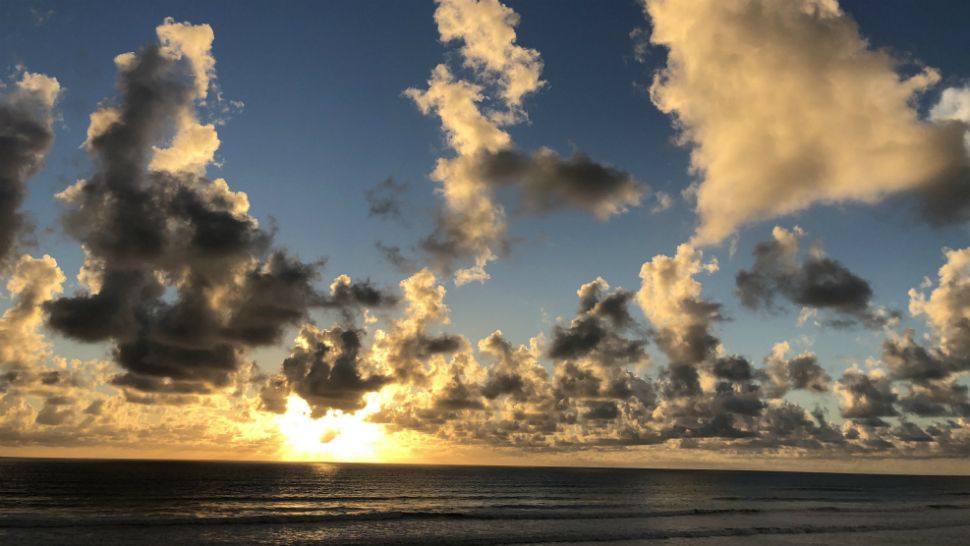ORLANDO, Fla. — Hurricane Florence is the top weather story, forecast to make landfall sometime tomorrow morning near Wilmington, NC.
- Rain coverage shrinks, temps increase
- Weather FAQ: Why are rip currents dangerous?
- TRACK THE TROPICS: Formation potentials, satellite loops, typical storm tracks
- SEE BELOW: See our 7-day forecast ▼
For us here in Central Florida, Florence will push a slug of dry air overhead and allow us to cut back rain chances.
Expect clear skies early Friday morning as lows stay quite warm in the mid-70s.
We’re in for a mostly sunny Friday and Saturday, as rain coverage shrinks back to 20 percent in the afternoon.
Lowering our rain chances will mean raising our highs a bit, with temps topping the lower 90s area-wide. Our feels like temp is going to climb up either side of 100 into the weekend.
Rain chances return to 40 percent Sunday, then 50 percent Monday and Tuesday. Highs will only drop a degree or two, staying slightly above seasonable levels all next week.
- View LIVE Interactive StormTracker 13 Radar Map
- View our LIVE Sky 13 Weather Cameras
- Sign up for Severe Weather Alerts
A high surf will continue Friday with crashing waves of around six to eight feet along area beaches.
Although the surfcast still looks good to fair Friday, large and dangerous swells will continue creating an extreme rip current risk.
Many of our local beaches are now flying red flags, but could pop up the double-red flags and close the water to swimmers at any time. The best advice from local officials is to avoid ocean swimming for now.
Tropical Update
As Florence nears the coast of North Carolina tonight, strong wind and bands of rain are making their way on shore. Conditions will only worsen as we progress toward daybreak.
We’re not focused on the category of storm because the biggest concern will be the amount of rain and high storm surge along the Carolinas through the weekend.
No matter the strength of the storm at landfall, this hurricane will have extensive impacts across the southeastern U.S. Rainfall totals are expected to top 20 to 30-inches with isolated 40-inch amounts just north of the center of circulation.
Storm surge is also a big concern, running 9 to 13-feet. Combined with a six to seven foot high tide, and surge could approach 20-feet in some coastal communities of North Carolina.
Atlantic hurricane season peaks in September and runs through Nov. 30.

We want your pictures!
Show us what the weather looks like in your neighborhood. Your photo could end up on Spectrum News 13.
- Get the Spectrum News 13 app for iOS or Android
- Tap "Submit Content" at the bottom of the app menu
- Remember to include your name and location



